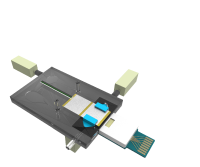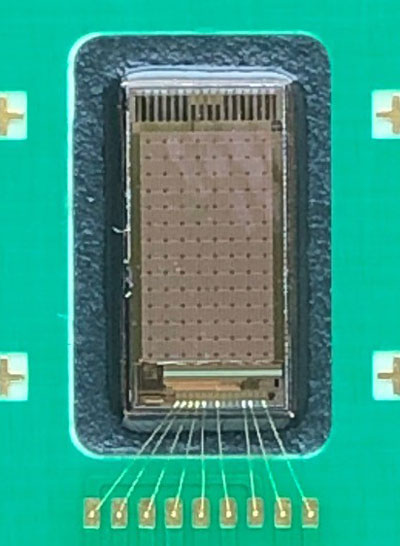empowered with bioluminescence

LucArray’s technology combines an extraordinarily sensitive light detector with very bright light-producing molecules from the deep ocean to perform up to a hundred different diagnostic tests on a small biological sample. LucArray’s unique architecture enables testing even of “dirty” samples such as whole blood, without the need for time-consuming sample preparation.


Magnification of the LucArray. The 112 detectors are visible as dark dots on the light-sensitive microchip.
The combination of an extremely sensitive detector and an extremely bright signal make for a unique biological detection system, the LucArray System. Despite its superlative signal strength and sensitivity, the detector cartridge is inexpensive enough to discard after use.
A smartphone platform offers a wide variety of connectivity options to send the test results where they can be immediately acted upon: from the ER to the physician, from the en-route ambulance to the ER, from the village nurse to the regional hospital, or from the battlefield to the command center.
Tests can be adapted for nucleic acid hybridization and ELISA-type immunodetection. LucArray is capable of detecting the presence of specific motifs of a given target and can be tailored for quantitation of protein and nucleic acid molecule counts to assess burden.